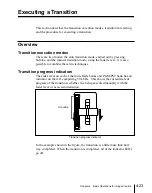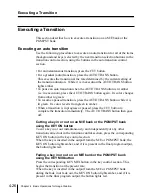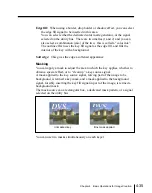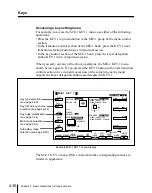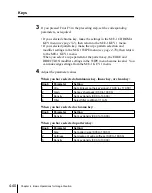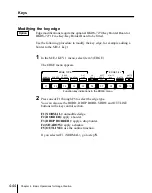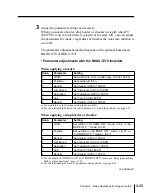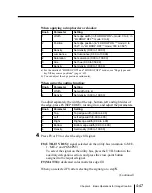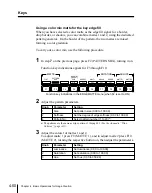
4-36
Chapter 4
Basic Operations for Image Creation
Keys
Processed key function
The term “processed key” refers to the function whereby a keyer in a
switcher operates in combination with an external DME unit to apply a DME
effect to a key.
When the processed key function is enabled, before combination with the
background, the key fill and key source signals produced by the switcher
keyer (with borders, shadows and other processing already effected) are
output to the DME from the switcher auxiliary buses. These signals are
subjected to DME processing to add extra effects, and then returned to the
switcher. Finally the signals returned from the DME undergo further
processing and are then combined with the background.
You can use the same keyer both for the initial processing and for the
processing of the signals returned from the DME, for greater keyer operation
efficiency.
Key snapshots
You can save all of the key settings, except the key on or off state, in a
dedicated register, and recall them as required.
For details of saving and recalling key snapshots, see the section “Key
snapshot operations” (page 4-63).
Key memory function
For each signal selected as a key source, this function automatically saves the
parameters (Clip, Gain, and Density, Filter, Left Pos, and Right Pos, or Size,
Softness, and Density) in memory. When you select the same signal again,
the parameters are recalled with it. Different sets of parameters are saved,
depending on the combination of key source, keyer, and key type.
You can use a setup menu (see page 14-31) to toggle the key memory
function on and off.
Summary of Contents for DVS-7250
Page 10: ......
Page 30: ......
Page 66: ......
Page 67: ...Menu Organization 3 2 Basic Menu Operations 3 6 Chapter 3 Basic Menu Operations ...
Page 274: ......
Page 328: ......
Page 364: ......
Page 488: ......
Page 495: ...Appendixes A 3 Enhanced Wipes 21 23 24 26 27 29 49 300 301 302 303 304 POLYGON ...
Page 534: ......
Page 542: ...Sony Corporation B P Company BZS 7061A WW A AE0 600 01 1 1999 ...


